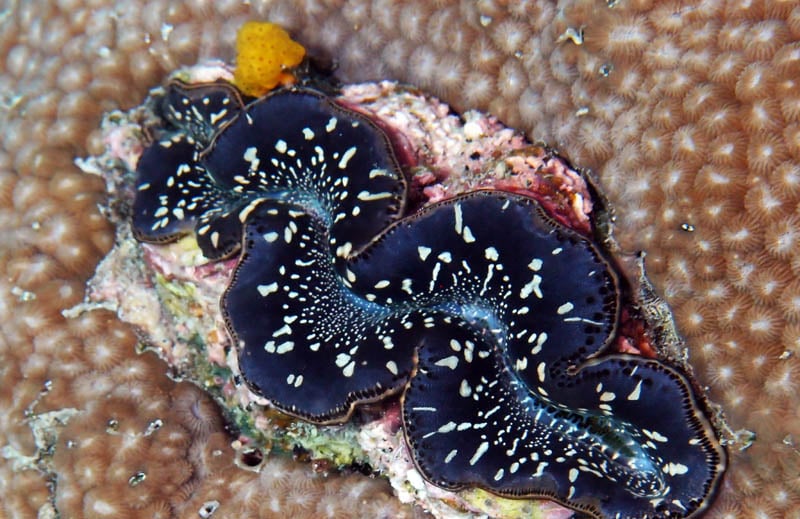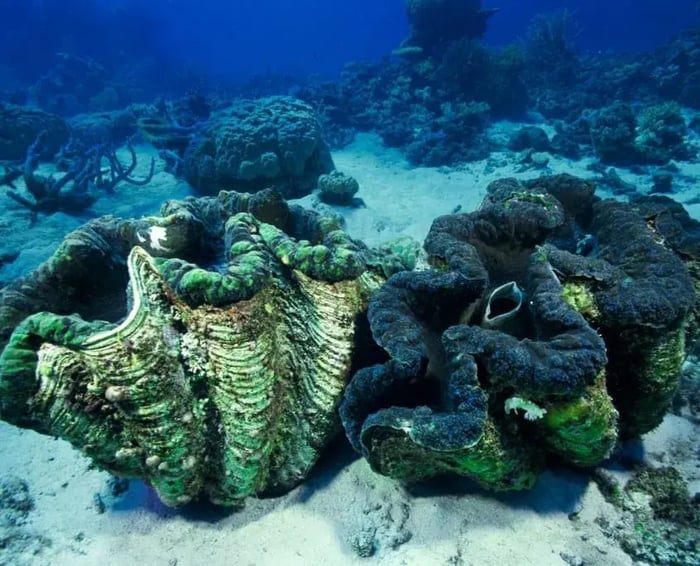Becoming endangered: Is it good that giant clams are being considered for inclusion as an endangered species?

Jordan
3
min. read

Giant clams, specifically the species within the genus Tridacna, are considered among the most iconic and ecologically important organisms in coral reef ecosystems. These massive bivalves serve a crucial role in reef dynamics, contributing to nutrient cycling, biodiversity, and even reef-building processes. However, due to increasing threats such as habitat loss, overharvesting, and climate change, there is growing concern about their conservation status. Currently, several species of giant clams are being considered for inclusion on the endangered species list. Below we compare the potential upsides and downsides of inclusion on this list, examining the benefits and drawbacks of such a decision for both conservation and broader societal implications.
 Image Credits: https://indahs.com/2015/07/19/giant-clam/
Image Credits: https://indahs.com/2015/07/19/giant-clam/
Current threats to giant clams
Giant clams face multiple pressures, both from natural and human-induced factors. Their large size, slow growth, and limited geographic distribution make them particularly vulnerable to overexploitation. In many regions, giant clams are harvested for their meat, shells, and even as live specimens for the aquarium trade (Lucas, 1994). Additionally, habitat destruction caused by coastal development, pollution, and ocean acidification has contributed to their declining populations. Climate change further exacerbates these threats, particularly by reducing the pH of marine environments, making it harder for giant clams to grow and reproduce.
Poaching, despite international regulations, remains a significant problem in some regions where enforcement is weak. As a result, the population sizes of some species, like Tridacna gigas and Tridacna derasa, have plummeted, leading conservationists to call for their inclusion on the endangered species list.
Current conservation status
At present, several giant clam species are already protected under Appendix II of the Convention on International Trade in Endangered Species of Wild Fauna and Flora (CITES), which regulates their international trade. Despite these protections, populations continue to decline in many parts of the Indo-Pacific, their primary habitat (Neo et al., 2015). The proposed inclusion of certain giant clam species on the endangered species list aims to strengthen their legal protection and raise awareness of their plight.
Positives of listing giant clams as endangered
- Enhanced legal protections: The primary advantage of including giant clams on the endangered species list is the enhanced legal protection it provides. Listing these species would make it illegal to harvest, trade, or harm them in any form within the jurisdiction of the listing country. In many cases, this will involve stricter enforcement of existing regulations and heavier penalties for poaching.
- Increased funding for conservation: Being included on the endangered species list often brings increased funding and resources for conservation efforts. Conservation organizations and governments may allocate more resources to protecting giant clams through habitat restoration, captive breeding programs, and marine protected areas (MPAs).
- Greater public awareness: An official endangered status can raise public awareness about the threats facing giant clams, potentially encouraging more sustainable practices in fisheries, aquaculture, and tourism. Public support is crucial for the success of conservation measures, as it often leads to better compliance with regulations and more funding for conservation activities.
- Habitat protection: Giant clams are keystone species in coral reef ecosystems, meaning their protection also indirectly benefits many other species. By focusing conservation efforts on giant clams, their habitat—coral reefs—will also be safeguarded, benefiting countless marine organisms that rely on healthy reefs for survival.

Image Credits: https://ladymusgraveexperience.com.au/giant-clams-the-great-8-southern-great-barrier-reef/
Negatives of listing giant clams as endangered
- Impact on livelihoods: In some regions, particularly in Southeast Asia and the Pacific Islands, local communities rely on giant clams as a food source and for economic activities. Listing these species as endangered could result in restrictions on their harvest, affecting local livelihoods. In many cases, giant clams are a traditional source of protein, and restrictions could force communities to find alternative sources of food.
- Challenges in enforcement: Although inclusion on the endangered species list increases legal protection, enforcing these protections can be challenging, particularly in remote regions. Marine environments are difficult to monitor, and poaching or illegal trade may continue despite the stricter regulations. Without effective enforcement, the endangered status may not lead to significant population recovery.
- Potential shift in trade: Restricting the legal trade of giant clams could inadvertently push the trade underground, driving up demand and prices on the black market. This could make it even more lucrative for poachers, potentially increasing illegal activities. For example, Tridacna gigas, valued for its meat and decorative shells, could see a rise in black-market demand if legal trade is restricted.
- Research limitations: Scientists studying giant clams may face additional regulatory hurdles if the species are included on the endangered species list. Obtaining permits to collect specimens or conduct field research could become more challenging, potentially limiting important research on the biology and conservation of these species. While well-intentioned, these restrictions could slow the progress of conservation science. This is particularly true in the case of the IMARCS Foundation, as there have already been discussions with Tridacna farms that supply giant clams for our research about the impacts that this will have on research and reef restoration activities, which are crucial for improving biodiversity.
Summary
The potential inclusion of giant clams on the endangered species list represents a critical step in protecting these ecologically significant organisms. While there are clear benefits, such as enhanced legal protection, increased funding for conservation, and greater public awareness, there are also challenges, including potential economic impacts on local communities and difficulties in enforcement. Balancing these factors will be essential in determining the best course of action for conserving giant clams and the ecosystems they support.
References:
Guest, J. R., Heyward, A., Omori, M., Iwao, K., Morse, A., & Boch, C. (2008). The role of giant clams in coral reef restoration. Marine Biology, 154(1), 249-259.
Lucas, J. S. (1994). The biology, exploitation, and mariculture of giant clams (Tridacnidae). Reviews in Fisheries Science, 2(3), 181-223.